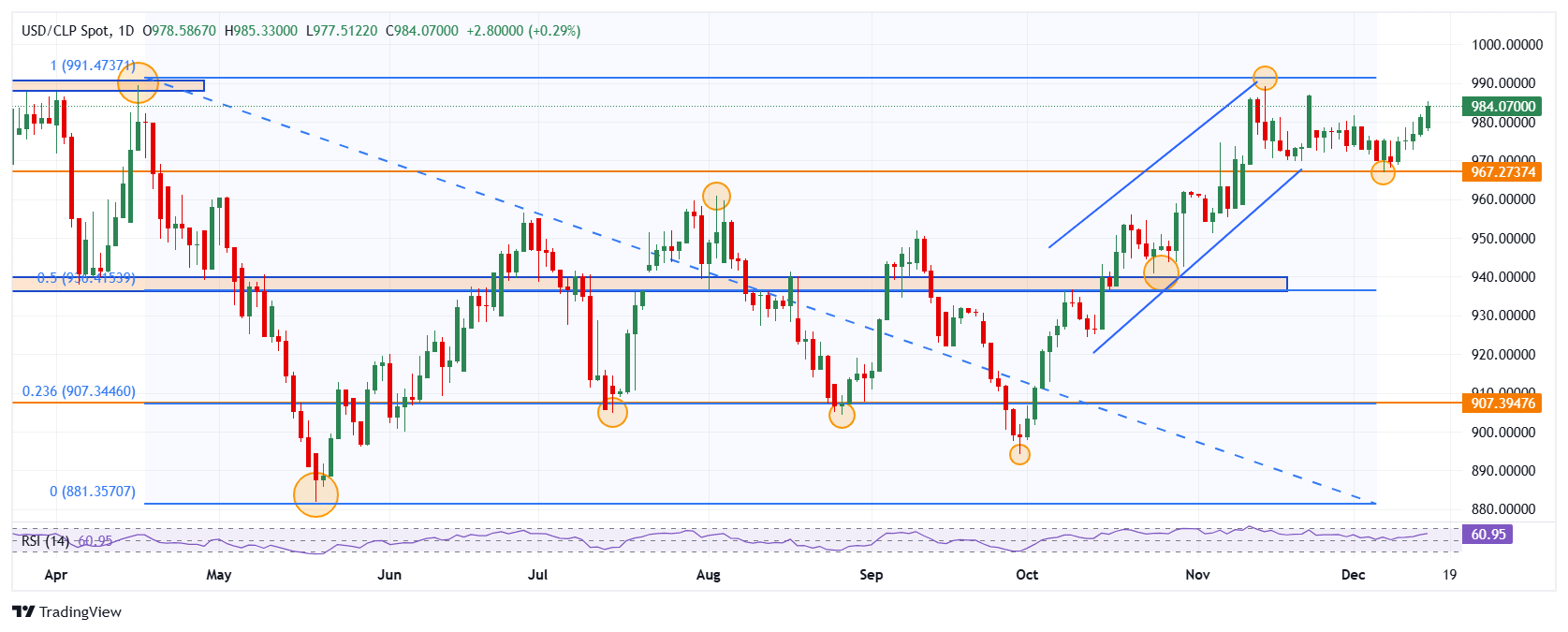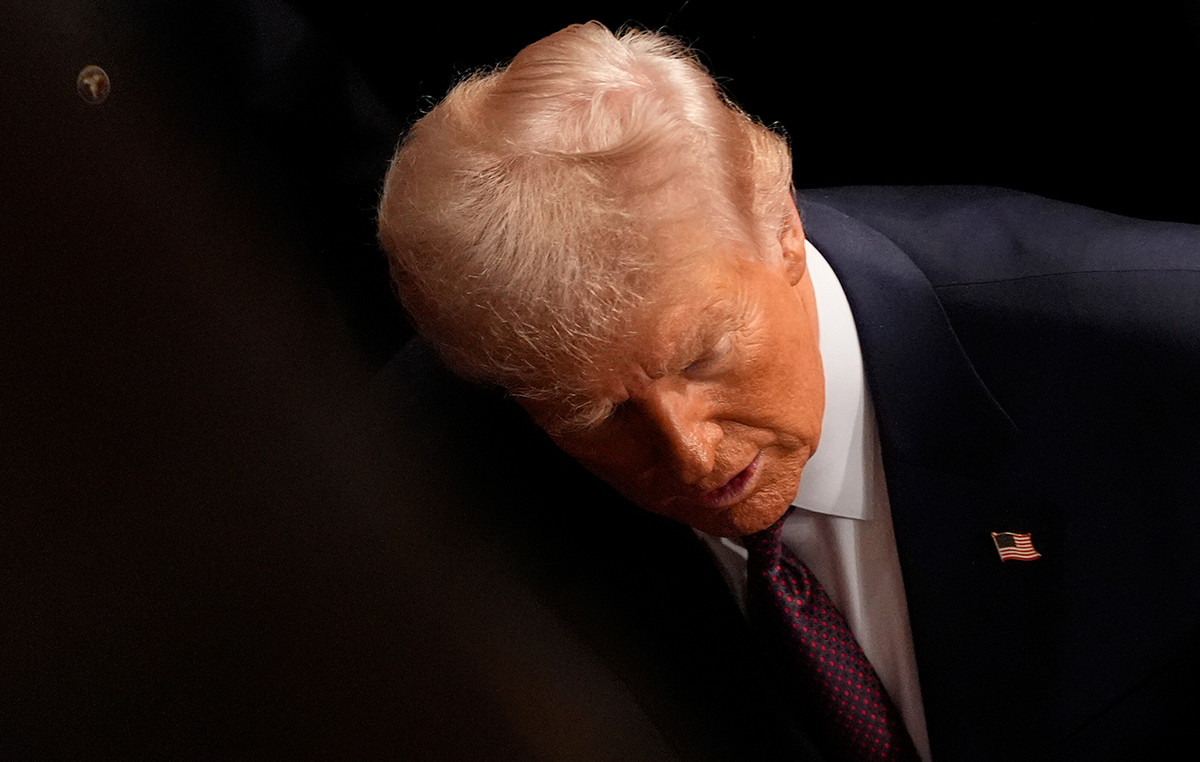- The Dollar gains 0.29% daily against the Chilean Peso, consolidating at highs of more than three weeks.
- S&P Global’s preliminary services PMI rose to 58.5, above analysts’ projections.
- Investors will have their attention on the interest rate decision of the Central Bank of Chile tomorrow, as well as the Federal Reserve on Wednesday, December 18.
The USD/CLP marked a low of the day at 977.51, where it found buyers that took the pair to November 22 highs at 985.33. At the time of writing, USD/CLP is trading at 984.07, up 0.29% on Monday.
Chilean peso loses ground ahead of key interest rate decisions
According to information published by Makit Economics, S&P Global’s preliminary services Purchasing Managers’ Index (PMI) stood at 58.5 in the December reading, above the estimated 55.7 points and the 56.1 reached in November. On the other hand, the manufacturing PMI decreased to 48.3 in the same period from the 49.7 points previously recorded, placing it below the 49.4 estimated by the analyst consensus.
Tomorrow’s attention will be on the interest rate decision of the Central Bank of Chile, the market expects a cut of 25 basis points to 5% from 5.25%. In the same vein, the Federal Reserve will publish its interest rate decision on Wednesday, with investors considering a decrease to 4.50% from 4.75%.
Technical levels in the USD/CLP
The USD/CLP established short-term support given by the December 6 low 966.89. The next key support area is at 940.90, converging with the 50% Fibonacci retracement. To the north, the closest resistance is seen at 989.40, the pivot point of April 16.
USD/CLP Daily Chart

The US Dollar FAQs
The United States Dollar (USD) is the official currency of the United States of America, and the “de facto” currency of a significant number of other countries where it is in circulation alongside local banknotes. According to 2022 data, it is the most traded currency in the world, with more than 88% of all global currency exchange operations, equivalent to an average of $6.6 trillion in daily transactions. After World War II, the USD took over from the pound sterling as the world’s reserve currency.
The single most important factor influencing the value of the US Dollar is monetary policy, which is determined by the Federal Reserve (Fed). The Fed has two mandates: achieve price stability (control inflation) and promote full employment. Your main tool to achieve these two objectives is to adjust interest rates. When prices rise too quickly and inflation exceeds the 2% target set by the Fed, the Fed raises rates, which favors the price of the dollar. When Inflation falls below 2% or the unemployment rate is too high, the Fed can lower interest rates, which weighs on the Dollar.
In extreme situations, the Federal Reserve can also print more dollars and enact quantitative easing (QE). QE is the process by which the Fed substantially increases the flow of credit into a clogged financial system. This is an unconventional policy measure used when credit has dried up because banks do not lend to each other (for fear of counterparty default). It is a last resort when a simple lowering of interest rates is unlikely to achieve the necessary result. It was the Fed’s weapon of choice to combat the credit crunch that occurred during the Great Financial Crisis of 2008. It involves the Fed printing more dollars and using them to buy US government bonds, primarily from financial institutions. QE usually leads to a weakening of the US Dollar.
Quantitative tightening (QT) is the reverse process by which the Federal Reserve stops purchasing bonds from financial institutions and does not reinvest the principal of maturing portfolio securities in new purchases. It is usually positive for the US dollar.
Source: Fx Street
I am Joshua Winder, a senior-level journalist and editor at World Stock Market. I specialize in covering news related to the stock market and economic trends. With more than 8 years of experience in this field, I have become an expert in financial reporting.







